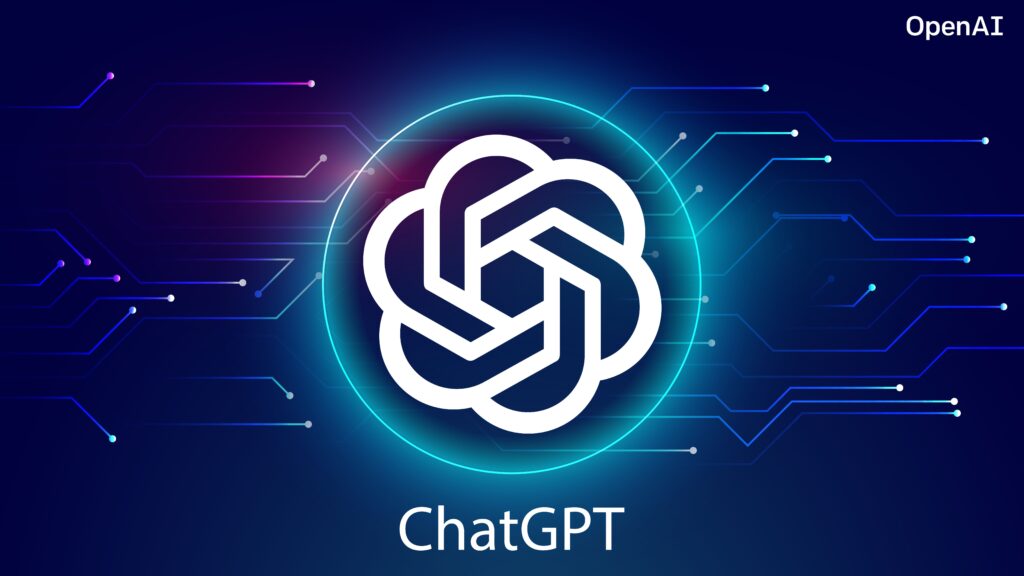Table of Contents
Introduction
In the realm of Artificial Intelligence (AI), advancements are continually reshaping how machines understand and process human language.
One crucial aspect of this transformation is prompt engineering, a technique that fine-tunes AI models for enhanced language generation. In this guide, we’ll delve into the depths of prompt engineering, its significance, implementation strategies, benefits, and best practices.
Understanding Prompt Engineering
Prompt engineering refers to the process of crafting effective prompts or input instructions that guide AI models to generate desired outputs.
It involves formulating queries or sentences that coax the model into producing specific types of responses. This technique is employed across various AI applications, from chatbots and language translation to content generation.
Why Prompt Engineering Matters
Prompt engineering empowers AI models to produce more relevant and accurate outputs, aligning with the intended purpose. Rather than leaving AI models to guess the desired outcome, prompt engineering provides explicit directions, enhancing the efficiency and effectiveness of AI-generated content.
Implementing Prompt Engineering
Let’s roll up our sleeves and dig into the nitty-gritty of prompt engineering. This process is all about fine-tuning the way we interact with AI to get the results we want. Here’s a breakdown of how it works:
Defining Clear Objectives:
First things first, we need a roadmap. Before we create any prompts, we should have a clear understanding of our end goal. Are we aiming for a persuasive sales pitch, an informative article, or a casual blog post? Defining the context, tone, and style helps us guide the AI model effectively.
Choosing Keywords:
Keywords act like signposts for the AI. They steer the content generation in the right direction. Think about what terms are essential to your topic or message. If you’re discussing “green energy,” incorporating keywords like “renewable sources” or “sustainability” will help the AI focus its output.
Structuring Prompts:
Now comes the art of crafting prompts. Keep them concise, well-structured, and contextually relevant. It’s like giving the AI a clear task to tackle. But here’s the exciting part—experiment with different prompt variations. This trial and error-process helps us find the prompts that trigger the best content generation.
Benefits of Prompt Engineering
Prompt engineering isn't just an exercise in creativity; it's a strategy with tangible benefits:
Enhanced Relevance:
Imagine AI generating content that perfectly aligns with your intentions. Well-crafted prompts do just that. They guide the AI to produce content that speaks your language, making it more contextually relevant and aligned with your expectations.
Time Savings:
Think about the hours spent on post-generation editing. With prompt engineering, that burden is lightened. By providing explicit instructions through prompts, we minimize the need for extensive editing after the content is generated. It’s like a shortcut to efficient content creation.
Consistency
Brand voice consistency is crucial. With prompt engineering, the AI outputs remain consistent with your desired tone, voice, and messaging. This ensures a unified brand experience across all AI-generated content, making your brand more recognizable and trustworthy.
In a nutshell, prompt engineering is your toolkit for effective AI collaboration. By defining objectives, choosing keywords, and crafting prompts strategically,
you’re not just generating content—you’re shaping it. With enhanced relevance, time savings, and brand consistency as the rewards, prompt engineering paves the way for more innovative AI interactions.
Also read:- Unlocking the Magic of Kundli GPT: Your Astrological Guide
Best Practices for Effective Prompt Engineering:
When it comes to prompt engineering, following these best practices can make all the difference in achieving the desired outcomes.
1. Clarity is Key: Crafting Clear Prompts
Creating prompts that are crystal clear and free from ambiguity is paramount. Imagine you’re giving a direct order to the AI. Use precise language and avoid vagueness. The more explicit you are, the better the AI can comprehend and execute your instructions accurately.
2. Experiment and Iterate: Refining Your Approach
Prompt engineering is a dynamic process. Don’t settle for the first prompt that comes to mind. Instead, experiment with various formulations. Try different keyword placements, sentence structures, and phrasings. This experimentation helps you discover the most effective prompts that yield the desired content.
3. Stay Contextually Relevant: Tailoring for Every Scenario
Understanding the context in which the AI will operate is crucial. Different situations call for different prompts. For instance, a prompt for a formal business report will differ from one for a casual blog post. Tailor your prompts to match the scenario and user interactions, ensuring that the generated content fits seamlessly into its intended context.
4. Keywords as Guideposts: Directing the AI
Utilize your chosen keywords strategically. Keywords are like guideposts for the AI, steering its focus in the right direction. Incorporate keywords naturally within the prompts to give the AI a clear path to follow. This approach helps the AI understand your intent and enhances the generated content’s relevance.
5. Concise yet Comprehensive: Crafting Effective Prompts
Conciseness is key, but don’t sacrifice clarity for brevity. Craft prompts that succinctly convey your message while still encompassing all the necessary details. Think of prompts as instructions that leave no room for misinterpretation, guiding the AI toward generating accurate content.
6. Embrace Data-Driven Refinement: Fine-Tuning for Excellence
Leverage the power of AI-generated results to refine your prompts further. Analyze the content produced based on different prompts. Observe which prompts consistently yield high-quality content and adapt your approach accordingly. This data-driven refinement helps you continuously enhance your prompt engineering strategy.
7. Account for User Intent: Aligning with Expectations
Put yourself in the user’s shoes. Consider their likely queries or preferences and create prompts that anticipate and fulfill those expectations. This user-centric approach enhances the overall AI interaction experience and increases the chances of generating content that resonates with your audience.
By integrating these best practices into your prompt engineering process, you’ll not only optimize the content generated by AI but also establish a systematic approach that evolves alongside the capabilities of AI models. Remember, prompt engineering is a dynamic and iterative journey, leading to increasingly precise and relevant AI-generated content.
Some Sample Prompts
Prompt 1 An Essay Writer
“I want you to act as an essay writer. You will need to research a given topic, formulate a thesis statement, and create a persuasive piece of work that is both informative and engaging and proper headings where required. My first suggestion request is “Future of AI ”
Prompt 2 An Blog Article Writer
Please act as an article writer with excellent SEO knowledge. My first request is I need help writing an article
Context:– How AI Change world in the coming future and its impact
Topic:- “AI impact in the future”
Keyword:- “AI, AI Impact”
Output:- Easy English with Proper Introduction, Required headings and Subheading and Bullets, Step by step guide where required, Conclusion and FAQ, and in the last Meta description
Words:- 1000
Prompt 3 An Interviewer
I want you to act as a Software Developer Interviewer you have more than 20 years of experience in the software development field. So ask me questions accordingly I am preparing an interview for Google, Meta, and Amazon so ask me one question then I will answer if it is correct appreciate me or if I am wrong or unable to answer correct me
Certification Programs in Prompt Engineering
Obtaining a certification in Prompt Engineering can significantly enhance your career prospects and open doors to exciting opportunities. In this section, we will explore the various certification programs available in the field.
One popular certification program is the Certified Prompt Engineer (CPE) offered by the Block Chain Council. This program equips individuals with the necessary skills and knowledge to excel in prompt engineering roles. The curriculum covers a wide range of topics, including supply chain optimization, transportation management, and customer service enhancement.
Another notable certification is the Prompt Delivery Professional (PDP) offered by the Prompt Engineering Institute (PEI). This program focuses on developing expertise in prompt delivery systems and strategies. It delves into areas such as route optimization, inventory management, and last-mile logistics.
Salary Expectations in the World of Prompt Engineering
When considering a career in Prompt Engineering, it’s natural to wonder about the salary expectations in this field. In this section, we will analyze industry trends and factors that influence compensation packages.
The salary range for prompt engineering professionals can vary depending on several factors such as experience, education, location, and industry. Entry-level positions typically offer salaries in the range of $50,000 to $70,000 per year. As you gain experience and move into senior roles, your earning potential can increase significantly.
Geographical location also plays a role in determining salaries. Prompt engineers working in metropolitan areas or regions with a high cost of living may command higher salaries compared to those in rural areas.
Future Scope of Prompt Engineering
The future of Prompt Engineering is filled with exciting possibilities driven by emerging trends and technologies. In this section, we will explore some of these trends and discuss how they shape the industry’s future scope.
Automation is one key trend that is transforming prompt engineering processes. Advancements in robotics and artificial intelligence have paved the way for automated systems that optimize delivery routes, manage inventory levels efficiently, and streamline supply chain operations.
Another significant trend is sustainability. Prompt Engineering professionals are increasingly focusing on developing eco-friendly delivery solutions, reducing carbon footprints, and implementing green logistics practices. As environmental concerns continue to gain importance, prompt engineers who can navigate sustainable strategies will be in high
Prompt Engineering Job Roles
“After mastering Prompt Engineering, you can explore various exciting career paths in the tech world. Some potential roles include:
- AI Engineer: Design and optimize prompts to enhance AI model performance.
- Data Scientist: Utilize prompt engineering techniques to extract valuable insights from data.
- NLP Specialist: Create effective prompts for natural language processing tasks.
- Research Scientist: Contribute to advancing AI technology through prompt-related research.
- Machine Learning Engineer: Develop innovative applications by fine-tuning model behavior with prompts.
- AI Product Manager: Lead projects that leverage prompt engineering for AI product development.
- Technical Writer: Explain complex prompt strategies to a wider audience through clear and concise documentation.
- AI Researcher: Explore new avenues in AI and language models by experimenting with prompt design.
- Data Analyst: Employ prompt engineering to uncover trends and patterns in data.
- AI Consultant: Provide expertise on integrating prompt techniques into various industries and sectors.
These roles showcase the diverse opportunities that mastering prompt engineering can unlock in the evolving landscape of AI and technology.”
Conclusion
Prompt engineering is a game-changing approach in the world of AI-driven content generation. By crafting precise prompts, businesses can harness the full potential of AI models, resulting in improved accuracy, relevance, and efficiency.
Embracing prompt engineering not only streamlines content creation but also paves the way for a new era of personalized, contextually appropriate AI-generated content.
FAQs
Q1: What is the role of prompt engineering in AI?
Prompt engineering guides AI models to produce desired outputs by crafting specific input instructions or queries
Q2: Can prompt engineering be applied to various AI applications?
Absolutely. Prompt engineering is versatile and applicable to chatbots, language translation, content generation, and more
Q3: How can I optimize prompt engineering for my business?
Define clear objectives, choose relevant keywords, and structure prompts effectively. Continuously experiment and refine based on results.
Q4: Does prompt engineering eliminate the need for post-generation editing?
While it reduces the need for extensive editing, some degree of post-generation review is still beneficial for fine-tuning.
Q5: Is prompt engineering a one-time process?
No, prompt engineering requires iterative refinement to adapt to evolving AI model performance and changing user expectations.











